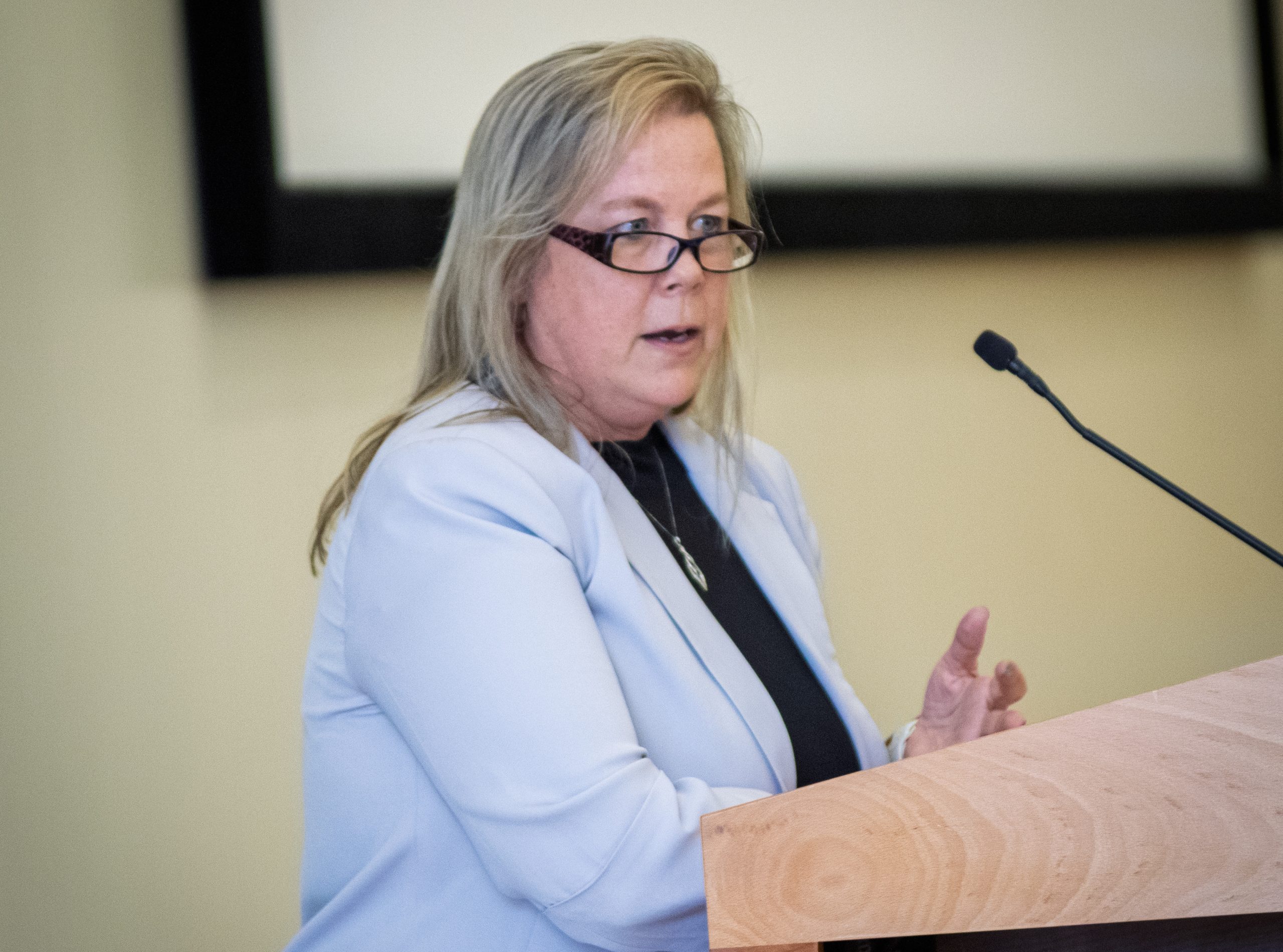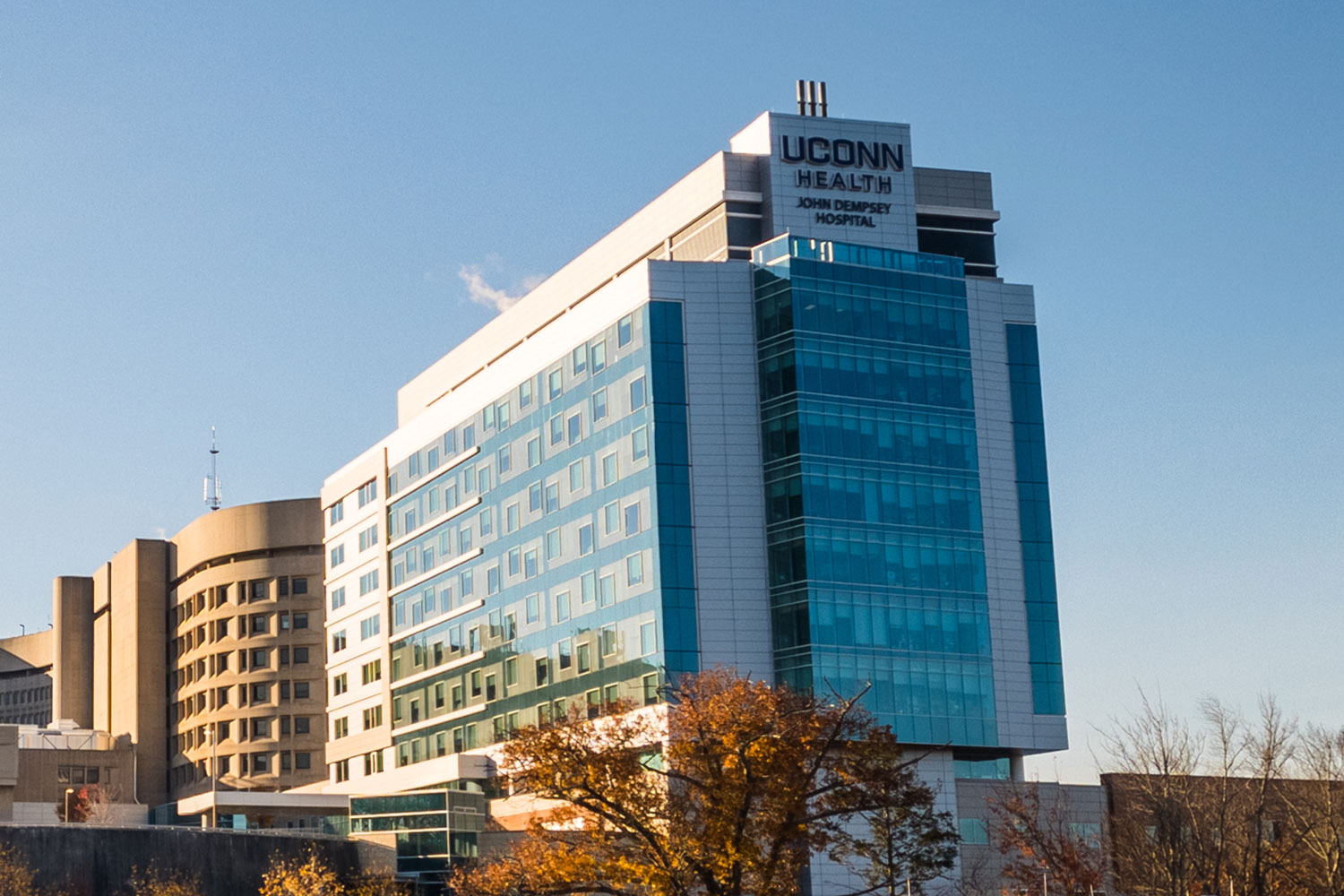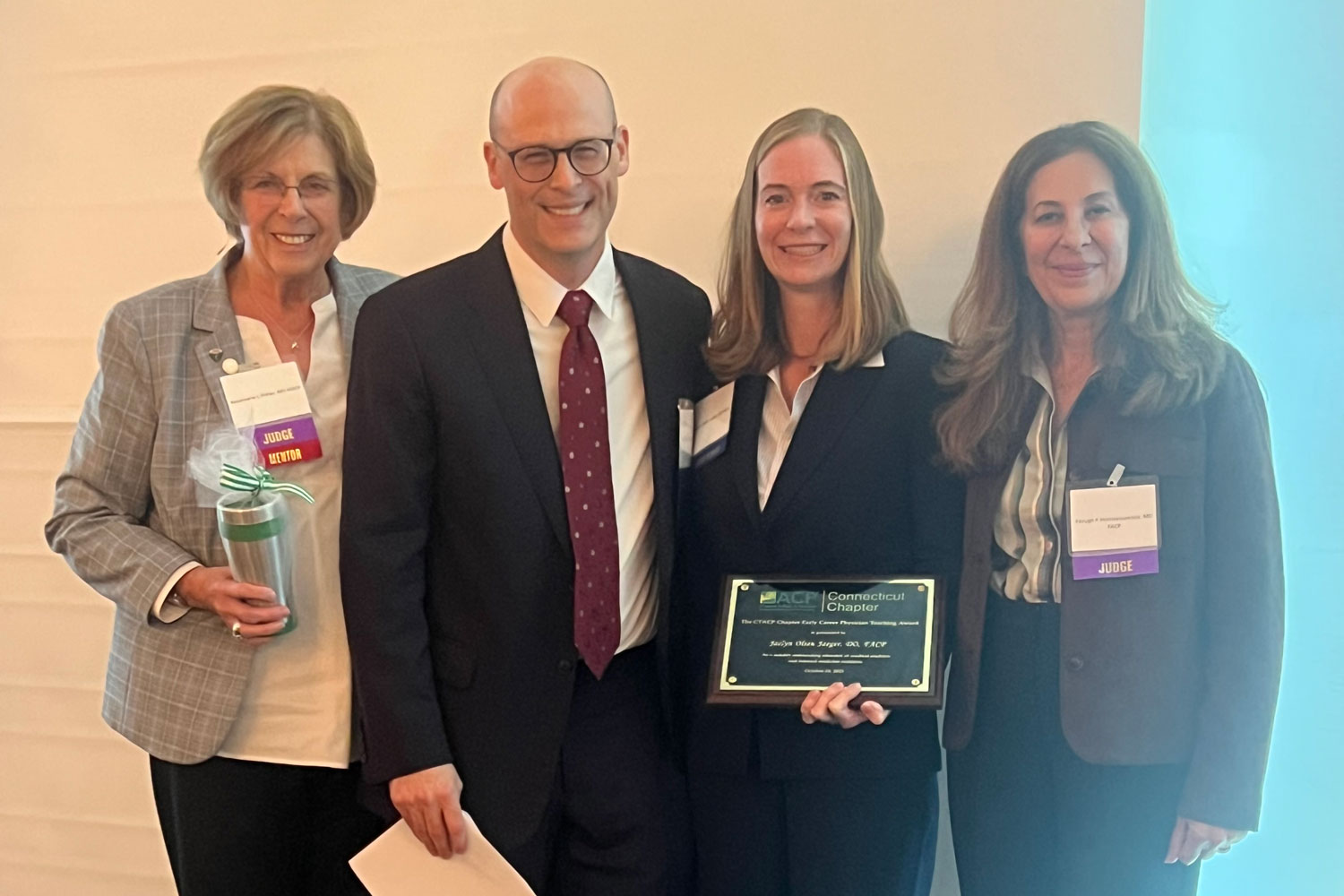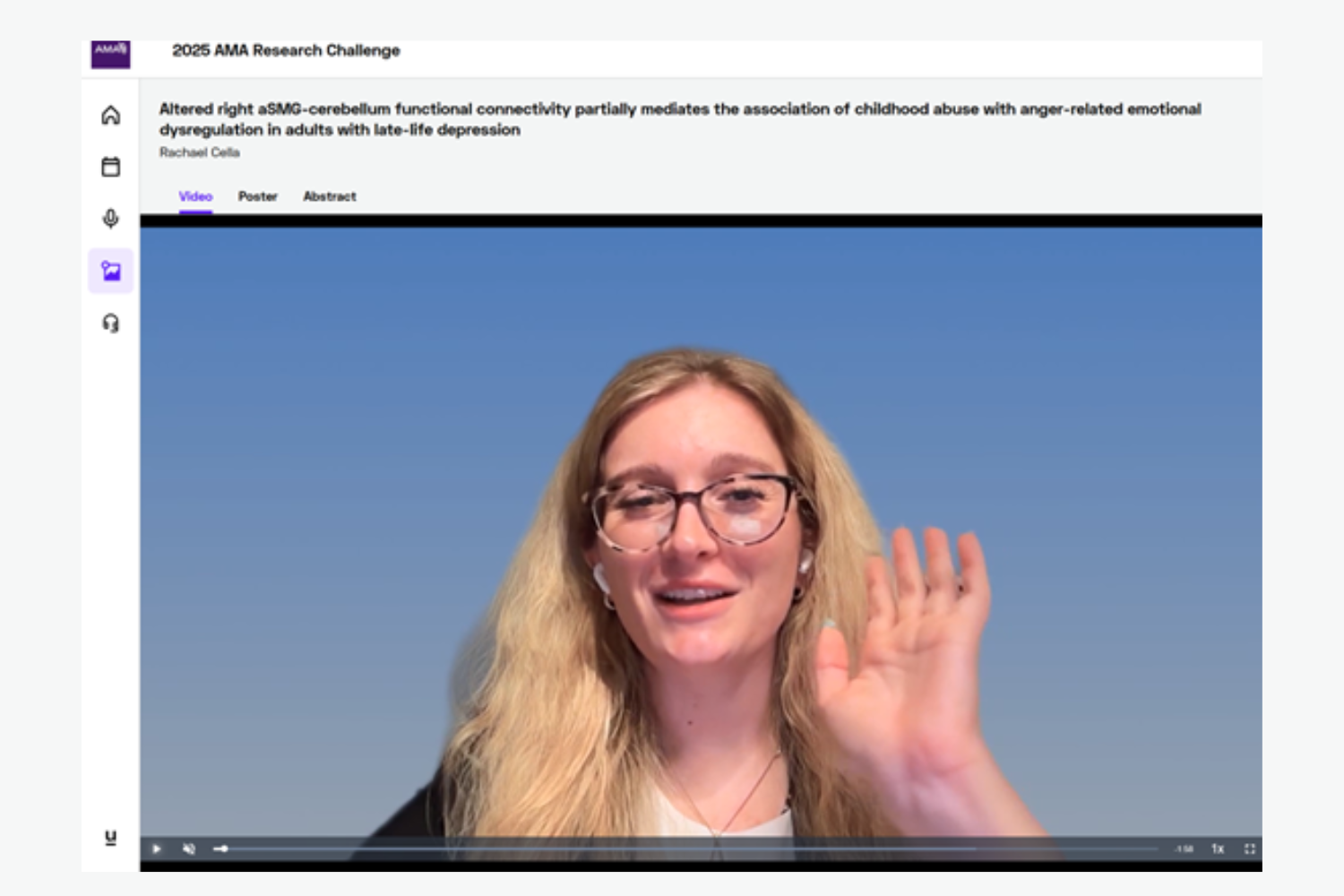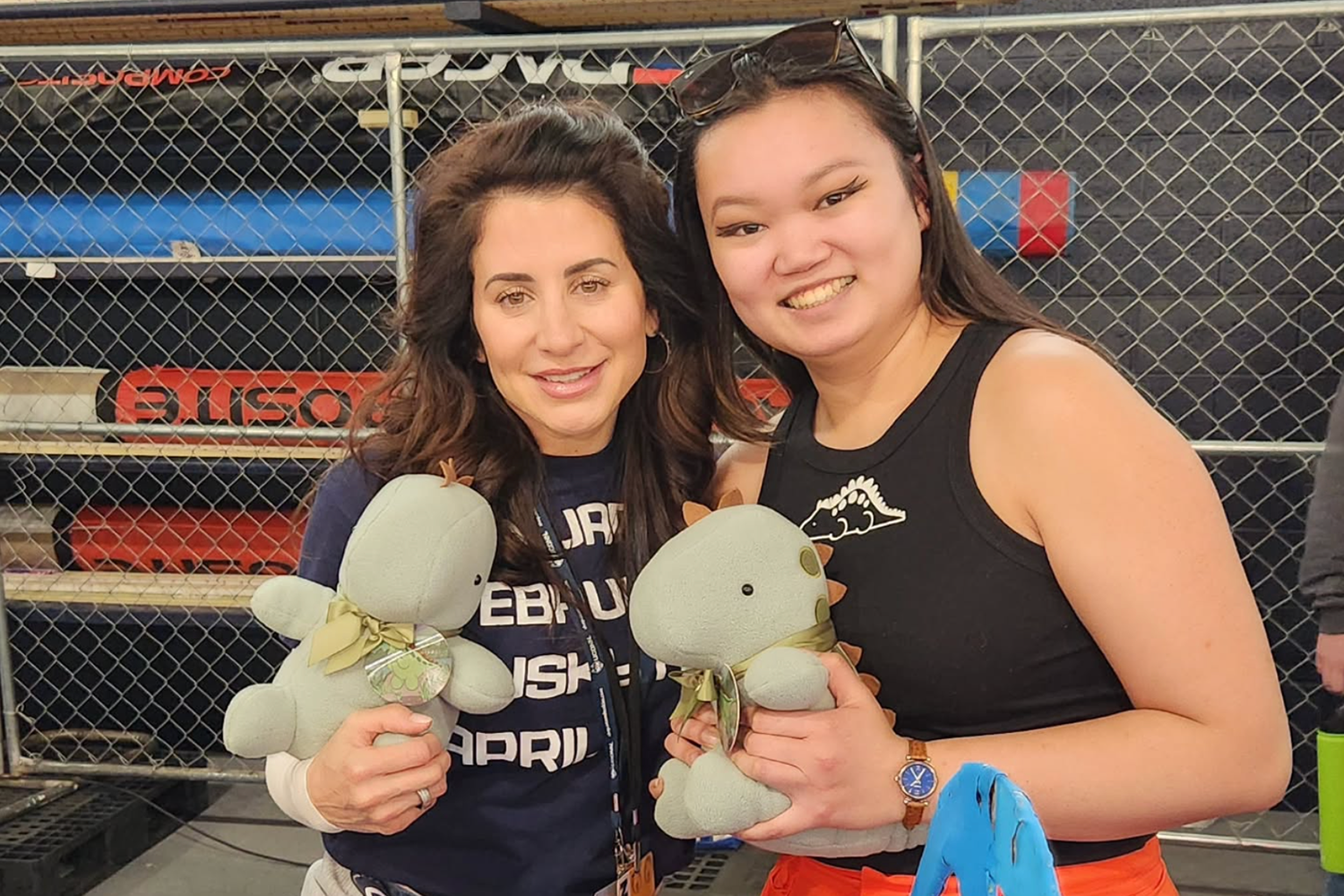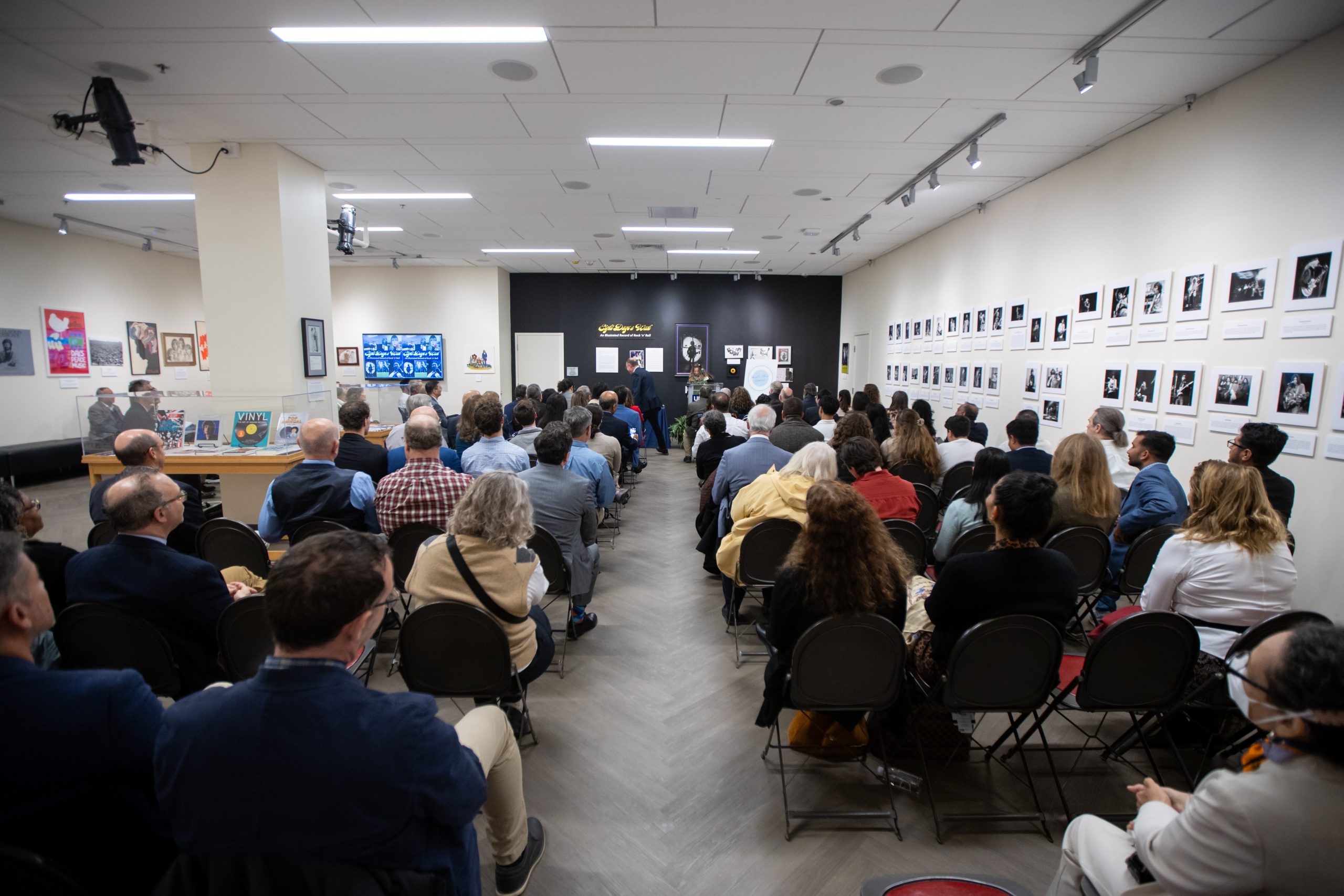Driving Passion: Erika Lindeberg, Jacobs Engineering Group Inc.
Erika Lindeberg is a senior project manager and group lead at Jacobs Engineering Group Inc., a global leader providing services in advanced manufacturing, cities and places, energy, environmental, life sciences, transportation, and water. Within the transportation group, Lindeberg leads the traffic engineering and highway safety team for the northeast, where she is the lead traffic engineer on various projects including large-scale major highway interchange reconstruction from New Jersey to Maine. She also manages multiple highway safety-engineering projects, and performs quality assurance, business development, staff hiring, and mentoring. Prior to joining Jacobs in 2022, she spent 28 years at the Connecticut Department of Transportation (DOT), the last five years as principal engineer in the Division of Traffic Engineering.
Lindeberg earned her B.S. and M.S. degrees in civil engineering at University of Connecticut. She is a licensed professional engineer, and holds certifications as a Professional Traffic Operations Engineer and Roadway Safety Professional. She currently holds several positions in professional engineering organizations, including secretary of the Connecticut chapter of Women Transportation Seminar (WTS): Advancing Women in Transportation; secretary of the Connecticut section of the Institute of Transportation Engineers; chairperson of the Regulatory/Warning technical committee for the National Committee on Uniform Traffic Control Devices; and is a member of the Pedestrian Committee for the Transportation Research Board. Lindeberg also has been an adjunct professor at UConn, teaching graduate and undergraduate civil engineering classes, and assists a senior civil engineering design team.
What would you say inspired your decision to become a civil engineer?
I remember one day, when I was only five years old, being in the back seat of the family car, being driven somewhere by my mother. When we paused at a stop sign, she debated for a moment, then proceeded the wrong way, even though I had pointed out the right direction to her. It wasn’t that I was precocious, but even as a child, I was interested in maps and in problem solving.
There were many factors in my choosing this professional path, but I’d credit my parents as being a key motivator. They always encouraged and supported my decisions. I never felt I couldn’t be an engineer, even though I realize other women may have been discouraged. My parents were both UConn alum; in fact, they met at UConn. I know they would have been proud of the career I’ve forged for myself, and my commitment to teaching and mentoring others. I also want to thank my husband for his support and for always encouraging me to pursue my passions.
What drove you to choose traffic engineering?
I’ve always had an interest in problem solving and often wondered why crashes happen and how to help prevent them. At UConn I didn’t particularly enjoy physics, calculus classes and other core curricula requirements; it wasn’t until I took Introduction to Transportation that I found something I really liked. At some early point, I spoke with an engineering firm about the qualifications needed to become an expert witness for crash investigations, and they advised me to pursue a degree in civil engineering.
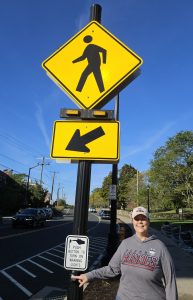
Part of my attraction to this field is that the work I do can have an impact on thousands of people. To me, structural engineering lacked that human element. I completed a one-year co-op assignment in traffic engineering-related research with Connecticut DOT, and I was hooked. When I finished my undergraduate degree, I intended to focus on crash analysis; DOT offered me a traffic engineering role, with a safety engineering component. After working there for three years, I started my graduate work, attending UConn part time at night.
How did your graduate work influence your professional assignments and interests?
I was particularly interested in studying crash analysis and examining potential mitigators like shoulder rumble strips on highways. Initially, rumble strips were located only on curves; I believed they needed to be everywhere, even on straightaways, to help alert drivers who were falling asleep or otherwise impaired. At the time, I compiled DOT data on 80,000 crashes for my master’s thesis and was able to statistically show that rumble strips should be placed along all shoulders of freeways. I was the lead engineer responsible for the first shoulder rumble strip projects in Connecticut. At CTDOT, I was also able to examine the role traffic lights, stop signs and curve signage played in helping to reduce or prevent roadway crashes.
Through my work, I realized that when you are considering traffic safety signage, barriers and road design, roadways have to accommodate different ages and abilities . . . you have to think about it from the perspective of a 16-year-old and an 80-year-old. That revelation played and continues to play an important role in my thinking.
I also want to credit Professor John Ivan, who was my UConn advisor at the time, for planting the seeds that led me down this path. I earned my master’s degree in 2004, and in 2006 John asked if I was interested in adjunct teaching. He had a medical leave of absence, and I was able to take over teaching his Traffic Engineering and, later on, a systems engineering undergrad class, which I really enjoyed. I discovered I truly had a passion for teaching, training and mentoring, and still feel that helping people prepare for the next steps in their career is invaluable.
Why did you leave DOT?
After many years working for the state, I realized I needed a change. I had spent a lot of time supporting Connecticut towns and municipalities, working on conceptual designs, funding, grants and project management. It was terrific, but I wanted to see what was happening in other states, and to get more involved in the quality and project-management side of the business. When I was hired by Jacobs, which is a global firm, I was able to work on projects throughout the northeastern United States, as well as interesting assignments in locations like Chicago and New Mexico. Today my duties include acting as the northeast chief group lead for traffic and safety engineering, spanning New Jersey to Maine, and my work in other states allows me to bring good ideas and practices back to Connecticut.
My areas of responsibility also grew. I’ve embraced what we call a “safe system” approach, using crash patterns for predicting and hopefully mitigating potential future problems. This area of study began in Sweden and has spread across Europe and the U.S. We identify risk, and proactively and systemically determine where safety countermeasures are needed before a crash occurs. Obviously, we can’t prevent all crashes – 95 percent are caused by drivers, not a lack of curve and speed-limit signage, roadway design and traffic buffers – but through our work we’ve helped reduce serious injuries and fatalities.
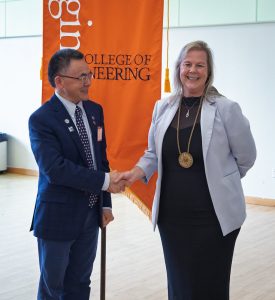
What important life lessons emerged from your work and education?
A big lesson is that no matter where you are in your career, you can continue learning. I worked with two college interns this summer and find sharing my knowledge and expertise incredibly rewarding. I learn from them, as well – the more you interact with others professionally and personally, the more you each benefit. To that end, I have a passion for mentoring and encouraging everyone from grade schoolers through those who, early in their careers, want to go into the STEM- or STEAM-related fields. And I have been able to help train and mentor staff while I was at DOT and now at Jacobs, where an important element of my job is to ensure that staff get the tools and training they need to do their jobs most effectively.
How has your trade association and committee work influenced your decisions and actions?
I am secretary of the Connecticut section of the Institute of Transportation Engineers, and secretary of the Women Transportation Seminar Connecticut chapter – both organizations award scholarships to young people pursuing careers in the transportation fields. I have volunteered at middle schools to do science-related activities and for UConn I have volunteered to support Civil Engineering senior design activities and projects.
I’ve also become more involved in helping to protect our most vulnerable road users, pedestrians. I work with professionals nationwide on the Transportation Research Board Pedestrian committee to advance research related to pedestrians. In 2024, I managed a statewide safety summit involving local police departments, the Departments of Public Works and federal agencies. I’ve written a number of professional papers examining subjects such as raising crosswalks to elevate and help protect pedestrians, and examining best practices for traffic signals, reflective strips, bus stops, train station platforms and more.
Everyone is impacted by transportation – we all need to get from point A to point B. As a traffic engineer, I strive to make this as efficient and safe as possible. My other top goal isn’t to have a bridge or highway named after me, but to help others with personal and professional development and instill confidence in their career choices. This is the impact those of us in this field can all make to the future of engineering.
I want to thank the UConn College of Engineering for selecting me for the Academy of Distinguished Engineers. I am deeply humbled to be included with so many talented peers, and proud of our individual and collective successes and excited to hear about the great work UConn students will complete in the future.
Latest UConn Today
- UConn Waterbury Dean Fumiko Hoeft Issues a Challenge, Makes Campaign Match in ‘Because of UConn’ Campaign'Student success is University success. And student success is also success for the future of our world'
- UConn Health’s Among ‘America’s Best-in-State Hospitals’John Dempsey Hospital earns Newsweek distinction 3 years running
- UConn Health’s Dr. Jaclyn Olsen Jaeger Recognized as Outstanding EducatorEarly Career Physician Teaching Award from Connecticut Chapter of the American College of Physicians
- UConn Medical Students Compete in Research Challenge of American Medical AssociationEight UConn School of Medicine students qualified for and competed in the exciting, national 2025 AMA Research Challenge to share their innovative research findings in virtual poster presentations Oct. 22-23.
- UConn Magazine: Dino MightLyla Andrick’s dinosaurs have irresistibly squishy noses — and emotions
- UConn Honors Faculty, Staff, Students, and Community Partners at 2025 Provost’s Awards CelebrationThe celebration was held on Tuesday, October 14, at the Jorgensen Center for the Performing Arts Art Gallery



